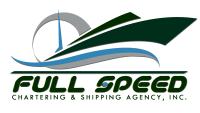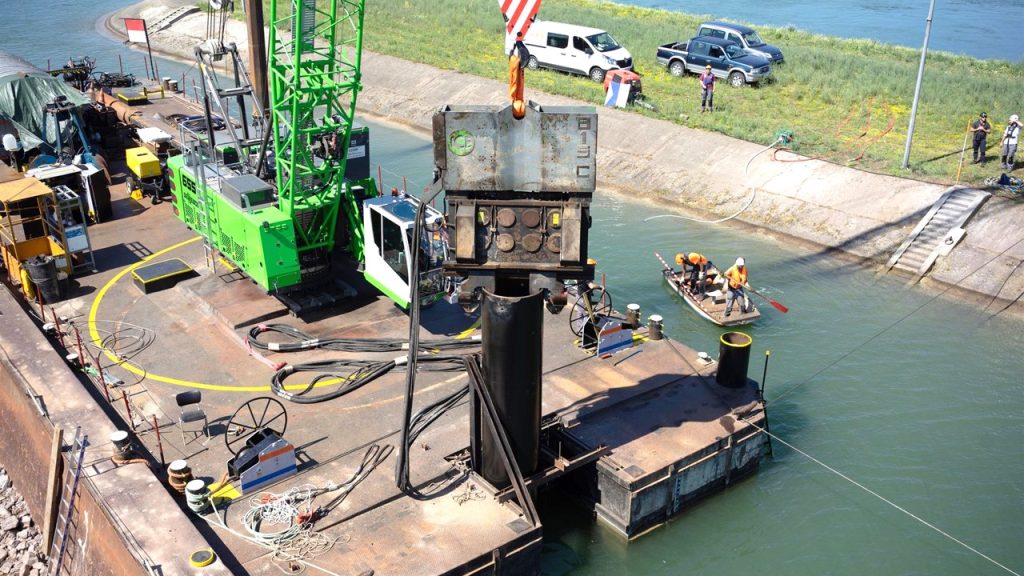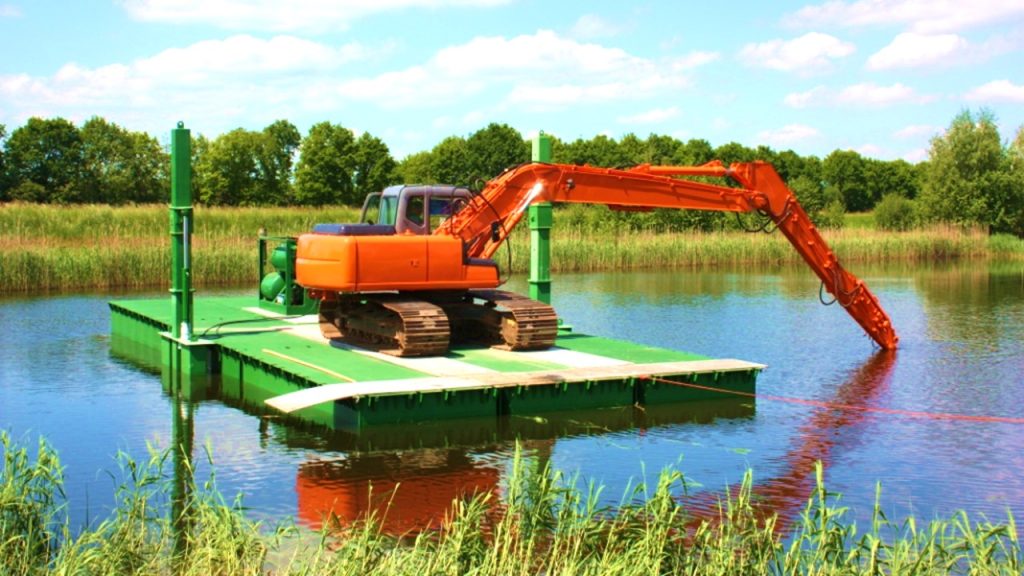In the Philippines, water transportation is an integral part of everyday life for many people. The archipelagic nature of the country necessitates various modes of transport to navigate its numerous islands and waterways. Two commonly used vessels are barges and pontoons in the Philippines, but what exactly sets them apart? While they may appear similar at first glance, understanding the key differences between barges and pontoons in the Philippines becomes crucial in determining their specific uses and advantages.
Barges and pontoons in the Philippines are two common types of watercraft that are often used for various purposes by local government units (LGUs), such as the city government and municipalities. Barges and pontoons in the Philippines are also being utilized by the national government, such as the Department of Public Works and Highways (DPWH), the Department of Environmental and Natural Resources (DENR), the Department of Tourism (DoT), and the Department of Transportation and Communication (DOTC), for their clearing operations and construction projects. However, despite their similarities in appearance and functionality, there are distinct differences between the two. This article will delve into the similarities between barges and pontoons in the Philippines, with a particular focus on the usage of pontoons in rivers and lakes. We will also delve into the dissimilarities between these two types of watercraft and explore how they contribute to the diverse maritime activities in Luzon, Visayas, and Mindanao.
In the Philippines, where water travel plays a crucial role due to its archipelagic nature, understanding the distinctions between barges and pontoons is particularly important. While both vessels may seem similar at first glance, being flat-bottomed boats primarily designed for carrying heavy loads, they serve different purposes and have unique characteristics that set them apart.
Understanding Barges And Pontoons in the Philippines
Pontoons in the Philippines have long played a significant role in both transportation and leisure activities. These versatile floating structures, often made of metal or concrete, provide the stability and buoyancy necessary for various purposes. Primarily used as floating docks or platforms for fishing, pontoons are also utilized as bases for small tourist resorts or even private residences on water. With its archipelagic nature, the Philippines relies heavily on barges and pontoons to transport goods and people between islands efficiently.
Barges in the Philippines, on the other hand, are more commonly associated with commercial shipping and heavy cargo transport. These large, flat-bottomed vessels allow for easy loading and unloading of goods through their open decks.
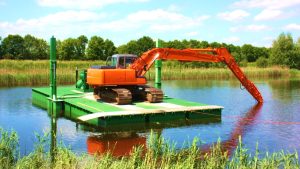
Definition: What Are Pontoons?
Pontoons in the Philippines are floating structures that provide stability and buoyancy for various water-based activities. These versatile platforms consist of one or more hollow chambers filled with air or other buoyant materials, enabling them to float on water surfaces. Pontoons are typically made from durable materials such as steel, concrete, or aluminum and can be customized for specific purposes.
Pontoons in the Philippines find wide applications across different industries and government projects. They serve as essential components for marine construction projects like bridges and piers, dredging and river clearing operations, and providing a stable foundation for these structures while allowing access to otherwise challenging locations. Moreover, pontoons in the Philippines play a crucial role in the tourism sector by supporting water-based recreational activities such as floating restaurants, houseboats, and even floating resorts that attract both local and international tourists.
Definition: What Are Barges?
Barges are flat-bottomed boats typically used for transporting cargo along inland waterways, rivers, and canals. These vessels do not have engines of their own, but they are usually towed or pushed by rental tugboats. In the Philippines, barges play a crucial role in the transportation industry, as they serve as an efficient means of moving heavy goods across various bodies of water.
Typically made of steel, barges come in different sizes and designs to accommodate different types of cargo. Some are designed to carry bulk goods such as coal, gravel, or sand, while others are equipped with tanks for transporting liquids like oil or chemicals. Barges can also be fitted with cranes or conveyor belts to facilitate the loading and unloading process at ports and piers.
Given its archipelagic nature with numerous rivers and lakes, the Philippines heavily relies on barges for interisland transport.
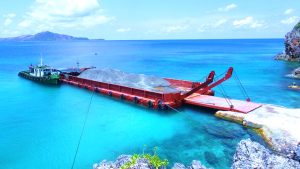
Key Differences Between Barges And Pontoons
When it comes to water transportation, barges and pontoons in the Philippines are two common options. While both serve similar purposes, they have distinct characteristics that set them apart. In the Philippines, where waterways play a vital role in transporting goods and people, understanding these key differences can help determine the most suitable choice for various needs.
Barges in the Philippines are designed to transport bulk materials such as coal, gravel, or sand in large quantities. Built with sturdy steel or concrete hulls, barges offer considerable storage space and have the capacity to carry hundreds of tons of cargo at once. Due to their size and weight-carrying capabilities, barges require rental tugboats to propel them forward.
On the other hand, pontoons in the Philippines are smaller floating platforms often used for dredging, construction, and clearing operations by the Philippine government. They are typically made of materials such as steel, wood, or fiberglass and are designed to float on water. Pontoons in the Philippines are popular among local municipalities and city governments for their water bodies, like lake and river clearing projects. These projects aim to improve waterway navigation, prevent flooding, and enhance the overall environmental quality of rivers and lakes.
Pontoons serve as essential tools in these clearing projects, allowing workers and equipment to access otherwise inaccessible areas. They are equipped with ramps and rails that enable easy loading and unloading of heavy machinery, making them ideal for transporting dredging equipment, debris removal vehicles, or even small boats used for monitoring purposes.
Unlike barges, pontoons in the Philippines do not have the capacity to carry heavy cargo. However, barges and pontoons are great for rivers and smaller bodies of water where maneuverability is key. They are often equipped with comfortable seating, storage compartments for fishing gear, and even small cabins or shelters for protection against the elements.
Pontoons in the Philippines come in various sizes and can accommodate different numbers of people. Some are small enough to be operated by a single individual, while others can hold a group of friends or family. These versatile watercraft allow fishing enthusiasts to explore remote areas that may not be accessible by larger boats.
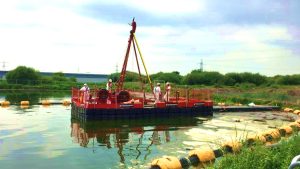
Common Uses Of Barges And Pontoons
Barges and pontoons in the Philippines are widely used in various industries, private companies, and local and national government projects, thanks to their versatility and adaptability. One common use of these floating platforms is for transportation purposes. Barges and pontoons are commonly employed to transport heavy equipment, construction materials, and goods across bodies of water. They offer a cost-effective solution for large-scale transportation, especially in areas where bridges or roads may be inaccessible or inefficient.
Another popular application of barges and pontoons in the Philippines is for marine construction projects. These floating platforms provide a stable and secure base for various activities such as pile driving, concrete pouring, and dredging operations. They allow construction crews to work efficiently even in challenging environments like deep waters or remote locations. Additionally, barges equipped with cranes can be used to lift heavy machinery or materials onto offshore structures such as oil rigs or wind farms. On the other hand, pontoons can carry light machinery for river excavation or bridge construction projects. They are often used in the Philippines for infrastructure development, particularly in areas where land-based access is limited or difficult. Pontoons provide a versatile solution for transporting equipment and materials across rivers and water bodies, allowing construction crews to carry out their tasks efficiently.
In river excavation projects, pontoons can be equipped with excavators or dredgers to remove sediment or debris from riverbeds. This helps improve water flow and prevent flooding in nearby communities.
In marine construction projects, barges and pontoons offer a cost-effective solution by eliminating the need for constructing temporary structures on land. The use of floating platforms allows construction activities to be carried out without disrupting the natural environment or causing damage to delicate ecosystems.
For pile-driving operations, barges and pontoons provide a stable platform for driving piles into the seabed. This is crucial in building sturdy foundations for structures like piers, docks, or bridges.
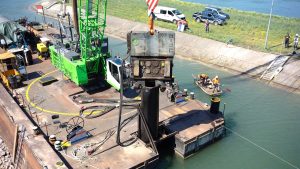
Pros And Cons of Using Barges And Pontoons In The Philippines
Pontoons in the Philippines have become an increasingly popular choice for transportation and recreational activities. One advantage of using pontoons is their versatility. These floating platforms are designed to carry heavy loads, making them ideal for transporting goods such as construction materials, agricultural products, or even vehicles across bodies of water. Furthermore, pontoons can be easily modified and customized to suit specific requirements, enabling businesses to adapt them for various purposes.
Another benefit of using pontoons in the Philippines is their cost-effectiveness when compared to other modes of transportation. As a waterborne option, barges and pontoons require less fuel consumption than trucks or airplanes, resulting in lower operational costs. Additionally, these floating platforms can navigate shallow waters and reach remote areas that may be inaccessible by land or air transport options.
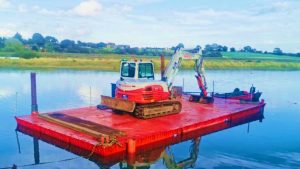
Purpose: Exploring Uses And Functions
Pontoon boats in the Philippines serve a variety of purposes, from providing floating platforms for water transportation to supporting infrastructure development projects. These versatile structures play a crucial role in connecting remote islands and coastal areas, enabling the smooth flow of goods and people. Pontoons are commonly used as ferry terminals, allowing ferries and boats to dock and unload passengers and cargo safely. They also function as temporary bridges during the construction or rehabilitation of permanent ones.
Moreover, pontoon watercraft are often employed in aquaculture operations throughout the Philippines. With its abundant marine resources, the country is a top producer of seafood products such as fish and shellfish. Pontoons are utilized as fish pens or cages that provide a controlled environment for breeding and growing fish stocks. These floating pens help increase productivity by optimizing space utilization and reducing risks from natural predators.
The significance of pontoon floatplanes in the Philippines extends beyond transportation and aquaculture. Pontoon portable boats also play a crucial role in the Philippine tourism industry. With its stunning coastlines and beautiful islands, the country attracts millions of tourists every year. Pontoon steel crafts are used to create floating resorts, allowing visitors to experience a unique and unforgettable stay on the water.
These floating resorts provide all amenities like hotels, restaurants, spas, and recreational activities while offering breathtaking views of the surrounding natural beauty. Pontoons are being utilized by the Philippine Department of Tourism, hotel owners, and recreational resort companies to attract local and international tourists.

Design And Structure: Highlighting Key Differences In Construction
When it comes to maritime transport, barges and pontoons in the Philippines play a crucial role in various industries such as construction, mining, and tourism. While both of these vessels are used for transportation on water bodies, they differ significantly in terms of design and structure.
Barges are large, flat-bottomed boats with spacious decks that are primarily used for transporting heavy cargo. They have sturdy construction with reinforced steel or iron frames that enable them to carry immense weight. The size of barges can vary greatly depending on their purpose, ranging from small flat-top barges used for river transportation to massive ocean-going barges capable of carrying thousands of metric tons. Their design allows for easy loading and unloading through ramps or cranes installed on the barge itself.
On the other hand, pontoons in the Philippines are generally smaller and more lightweight than barges. They are typically used for floating platforms, such as docks or bridges, and are often made from materials like concrete or steel.
Pontoons in the Philippines have a simple yet effective design, consisting of a hollow structure that provides buoyancy to keep them afloat. They can be easily maneuvered and transported due to their compact size and lightweight construction.
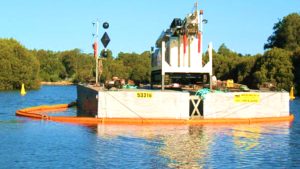
Mobility And Maneuverability: Comparing Their Movement Capabilities
Pontoons in the Philippines have long been used as a reliable means of transportation in the Philippines, thanks to their exceptional mobility and maneuverability. These floating structures, typically made of concrete or metal, offer unique advantages when it comes to navigating waterways and transporting goods. Unlike traditional barges that rely on external power sources such as tugboats for movement, pontoon boat decks are able to move independently due to their built-in propulsion systems. This allows them to swiftly navigate through narrow channels and shallow waters where larger vessels would struggle.
One significant advantage of pontoon rafts is their ability to access remote areas that are unreachable by other types of vessels. In a country like the Philippines, which consists of numerous islands with diverse terrain, this capability is invaluable for transporting goods and materials efficiently.
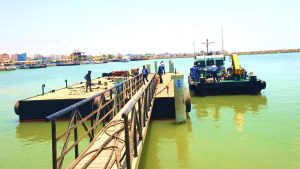
Applications: Identifying Common Industries That Utilize Each Vessel
Barges and pontoons in the Philippines play a crucial role in a variety of industries. Pontoons are widely utilized in the country for various applications, including marine construction, tourism, and transportation. With its extensive coastline and numerous islands, the Philippines heavily relies on pontoon systems for the development of coastal infrastructure projects such as ports, harbors, and jetties.
Pontoon boats in the Philippines are used for cleaning rivers and waterways, as well as for dredging operations. They are also essential for transporting heavy machinery and equipment to remote locations that are not easily accessible by land.
In the construction industry, pontoon shipbuilders in the Philippines provide a cost-effective solution for transporting building materials such as sand, gravel, cement, steel beams, and construction vehicles. These vessels can carry large quantities of materials at once, significantly reducing transportation costs and time.
Furthermore, pontoon floating platforms are also used to support tourism activities such as island-hopping tours and water sports centers.
On the other hand, barges in the Philippines serve as an essential tool in several industries within the country. The country’s booming mining sector greatly benefits from barges’ ability to transport large quantities of minerals across bodies of water efficiently. These rental vessels enable miners to move heavy equipment and materials from one location to another with ease.
Do You Need Pontoons in the Philippines For Your Project?
If you have a project in the Philippines that requires pontoon flat boats and deck barges, then look no further than Amaya Dockyard & Marine Services Inc. With our expertise and experience, we can build and rent out pontoons to provide you with high-quality watercraft that will meet your specific needs. Whether it’s for construction, transportation, or any other marine-related project, our sister company, Amaya Dockyard & Marine Services Inc., has the capabilities to deliver.
- Email us: info@fullspeedchartering.com
- Call our 24-hour hotline: +63 939 375 3224
- Viber: +63 939 375 3224
- WhatsApp: +63 939 375 3224
- Facebook Messenger: Click here
- Click here to inquire
The Philippines is known for its beautiful coastline and abundant water resources. This makes it an ideal location for various maritime activities such as dredging, bridge construction, or even setting up floating restaurants. Having the right equipment, like pontoons and barges, is crucial to ensuring the success of these projects. Amaya Dockyard & Marine Services Inc. understands this need and has been providing top-notch services to local (LGUs) and national governments (DPWH, DENR, DoT) for years.
Takeaway: Choosing the Right Barges and Pontoons in the Philippines
In conclusion, when it comes to choosing the right option for your water projects, barges and pontoons in the Philippines offer unique advantages and considerations. Water barges provide a larger platform and greater stability, making them ideal for large-scale projects such as construction or the transportation of heavy equipment via river or open sea. On the other hand, pontoons are more versatile and can be easily customized to suit different purposes, including floating platforms for the local government units’ clearing operations, dredging of rivers, or lake construction activities. Ultimately, the decision should be based on the specific needs and requirements of your project. Consider factors such as size, stability, customization options, and cost-effectiveness before making a final choice. Remember that each option has its own pros and cons, so take the time to carefully evaluate your options before proceeding with your water project.
